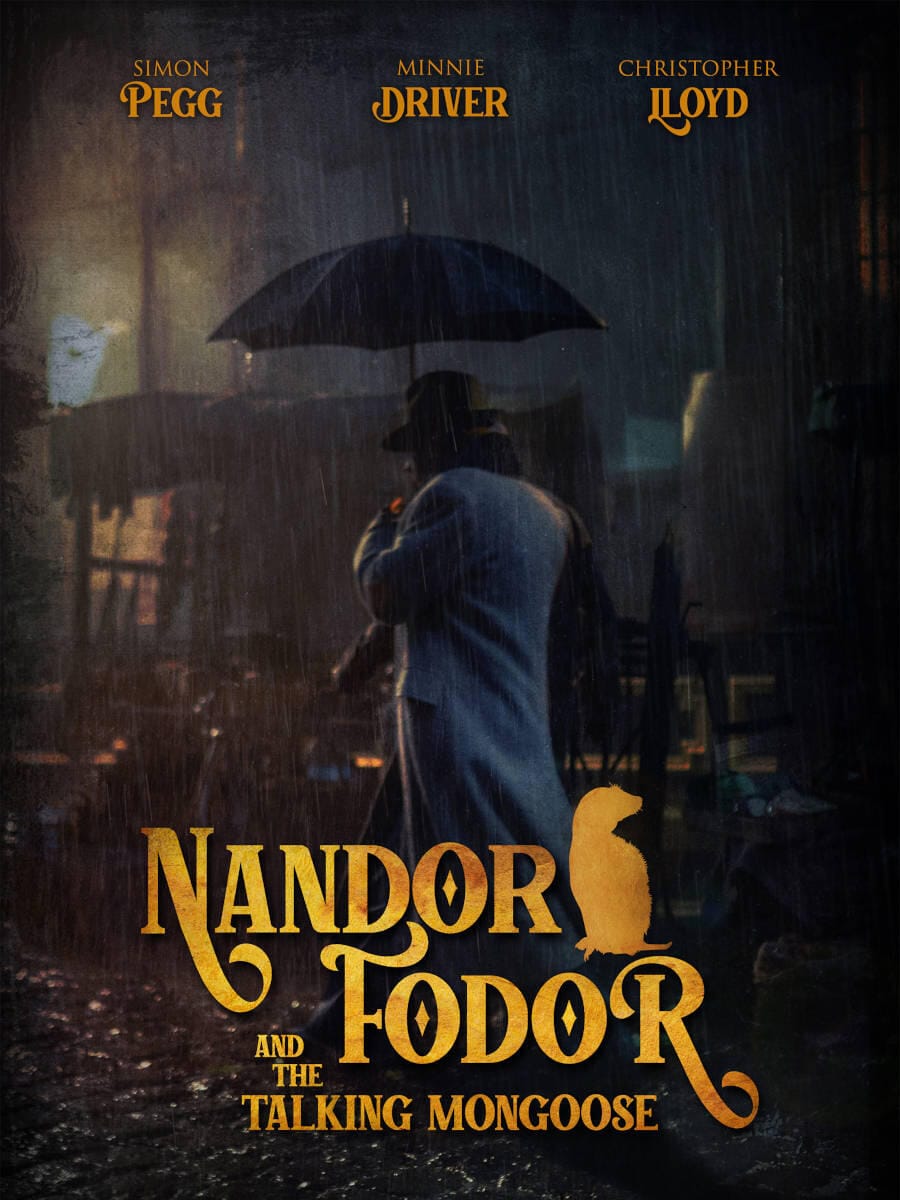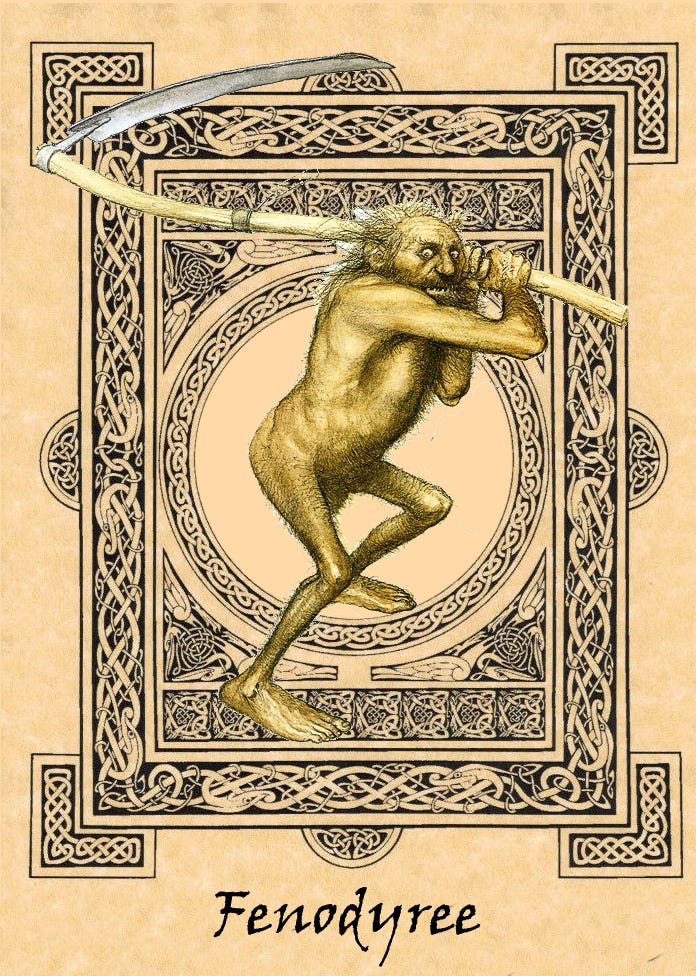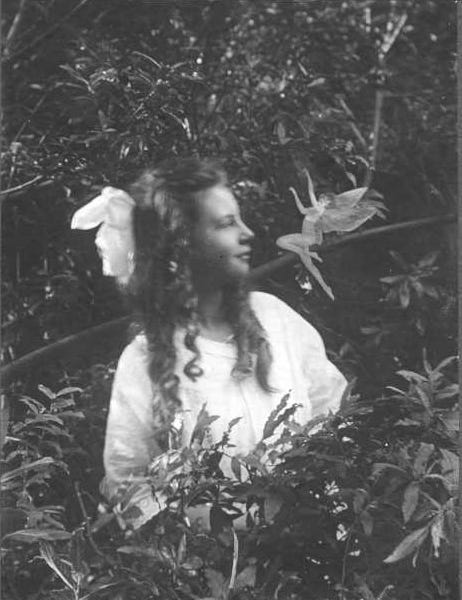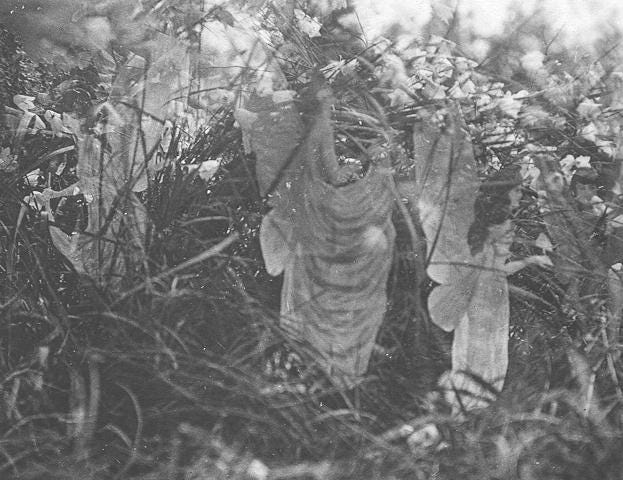Nandor Fodor and the Talking Mongoose
Based on true events.

When paranormal psychologist Dr. Nandor Fodor journeys to the Isle of Man to investigate a family's claim that a talking mongoose named Gef (Jeff) lives in the walls of their house, and seemingly has magical powers (beyond the fact he talks, obviously), he finds much more than he expected, and soon enough, everyone becomes a suspect in his relentless effort to uncover the truth.
The real-life Dr. Nandor Fodor was a paranormal psychologist born in Beregszász, in the Austro-Hungarian Empire, in modern-day Ukraine, and he was one of the leading authorities on poltergeists, hauntings, and the kind of paranormal phenomena usually associated with mediumship. A one-time associate of Dr. Sigmund Freud, he wrote on such subjects as prenatal development and dream interpretation, but is mostly known for his magnum opus, The Encyclopedia of Psychic Science, which was first published in 1934, and feels like the kind of book Egon Spengler would reference in Ghostbusters. His efforts in paranormal psychology were similar to those of the famed escape artist, illusionist, stunt performer, and scourge of fake spiritualists, Harry Houdini, meaning that Dr. Fodor was someone who wants to believe, but his search for truth has only ever led him to uncover charlatans.
As Christopher Lloyd, playing famed paranormal investigator and contemporary of Dr. Fodor, Dr. Harry Price says to him: “You investigate supernatural occurrences under the guise of understanding why humans project these phantasms into reality, why they are incapable of letting go of these delusions, as you call them.”
And then came Gef…

(Voiced by Neil Gaiman).
In September 1931, the Irving family, consisting of James, Margaret, and their 13-year-old daughter Voirrey—which is the craziest old timey name ever—claimed they heard noises coming from within their house's walls that variously resembled a ferret, a dog, or a baby, all of which are easily mistaken for the other. According to the Irvings, the noises were a creature named Gef (Jeff)—eventually known to the world as the Talking Mongoose or the Dalby Spook—who explained to them that it was actually a mongoose that had born in New Delhi in 1852.
According to the Irvings, Gef claimed he was "an extra extra clever mongoose,” as well as an "Earthbound spirit,” "a ghost in the form of a mongoose," and at one point said: "I am a freak. I have hands and I have feet, and if you saw me you'd faint, you'd be petrified, mummified, turned into stone or a pillar of salt!” which I believe are lyrics from a song by Radiohead.
The Irvings claimed Gef guarded their house, and informed them of the approach of guests and unfamiliar dogs, that he would turn off the stove at night, if they forgot to, and wake them, should they oversleep. Also, he would kill any mice that got into the house. Much like Santa, they left out biscuits, chocolates, and bananas, which he took when no one was watching. The Irvings also claimed he regularly accompanied them on trips to the market, chatting incessantly, but always from the far side of the hedge. Many people, both locals and visitors, claimed to have seen or heard Gef, but all of the physical evidence—footprints, stains on the wall, hair samples—were identified as belonging to the Irvings' sheepdog, as were several photos taken by the Irvings.
When Mr. Irving died in 1945, Mrs. Irving and Voirrey moved away, and the new owner claimed in the press that he had shot and killed Gef, but Voirrey, who never admitted to the hoax, claimed that the dead mongoose shown in the newspapers was not actually Gef.
This is what the world was like before TV.
Also, full disclosure… Voirrey was well-known to be an accomplished ventriloquist.

Point of fact…
If Gef the Talking Mongoose had actually been real, something that truly existed as claimed, then they were most likely something known as a Fenodyree (…he explains authoritatively from behind his DM Screen).
Manx, or Manx Gaelic, is a branch of Celtic, and the historical language of the Manx people, who originated on the Isle of Man, which is where this story takes place. The word Fenodyree is from two Manx words, one being fynney, meaning “hair” or “fur,” and oashyree, meaning “stockings.” So… hairy socks, which I suppose fits weasels and mongooses. A more common meaning is "the hairy one” or simply "something hairy," all of which makes it feel like the word was probably used in a lot Manx sex jokes.
In Manx folklore, the Fenodyree is a kind of fairy that is covered in hair, or a “hairy fairy” (not to be confused with a Bear), who mostly prefers to work naked (although the mistake is understandable). Much like creatures known as Brownies, it’s known to be helpful to humans, often doing tasks like… carrying big rocks, or cutting meadow grass really quickly.
Like I said… a world without TV.

Simon Pegg plays Dr. Nandor Fodor, and he is joined by Minnie Driver, who plays Dr. Fodor’s long-time assistant, Anne. They are fantastic together, with a very charming, very nice, and easy comedic chemistry.
The film opens with its central question: What is reality? What defines it? Is reality based in universally observable truths? Or, is reality defined by those things that you personally believe and know to be true? Despite the pleasantness of the Irvings as they tell their story, despite the many witnesses, Dr. Fodor is certain that Gef is a hoax, while Anne is willing to consider the possibility that some things may simply lie beyond the ken of humanity, and this rift between them is often what illustrates that central question. Dr. Fodor is relieved to discover that the Irving’s farmhand, Errol, doesn’t believe in Gef at all, but he is also stymied by the man’s indulgence of the whole idea. Errol tells Dr. Fodor that he believes that letting people believe in Gef is better than proving to them that they are wrong. “People love that mongoose,” he tells Dr. Fodor. But when Dr. Fodor is finally able to speak to Gef, something happens that he cannot reconcile with his own understanding of reality, and it leaves him deeply shaken. Is Gef actually real?
Not that the film provides any answers one way or another, of course.
But… Is Gef real? Come on. It’s a talking Mongoose that supposedly quotes Yeats poems before they were written, but still, definitively answering that question isn’t the point. The point is to explore how we discern reality, and more importantly, why, and what purpose does choosing to believe that serve.
At one point, from a hole in the wall of the Irving family house, Gef asks: “What if there is nothing after this, no heaven, no hell, just nothing, no awareness that we were ever aware at all? What if this is all there is? What will you be remembered for?”

Despite being based on actual events of that era, the film being set in that peculiar time in the early 20th Century, when spiritualists, fortune tellers, and seances were all the rage, evokes that Era of Great Hoaxes, recalling ruses like the Cottingley Fairies in 1917, where two girls (cousins, ages nine and sixteen) took a series of photographs of themselves while capering fairies. It was a story that Sir Arthur Conan Doyle believed in so enthusiastically it irrevocably severed his friendship with renowned sceptic Harry Houdini. It was also a story that in 1983 the two women finally confessed was all faked… except for the 5th photo, which they held to be real.

So why? What was with this particular period of time? Was this just the Opportunistic capitalizing on the Gullible in a time when it was easier to get away with it? Was it just the result of the inevitable clash that came when the Old World, a time when Dragons still lurked at the map’s edge, crashed headlong into a burgeoning New World of truth and scientific wonders. Was this era actully just the time when real magic finally faded from the world? Or was this simply people wanting to believe in something?
Who knows.
Nandor Fodor and the Talking Mongoose is a film about the search for meaning. But to be fair, this maybe makes it sound like it’s a deeper film than it intends to be. While the film is a conversation about meaning and the power of belief, as well as the need to believe, and the possibility that some things just can’t be fully explained, as well as the fact that reality is subjective in nature, and what's true for one person may not be true for another, in the end, it’s really just a sweet little farce about an odd moment in time, a fun story with a cast that is great together.
And when all is said and done, maybe the answer as to why any of this even happened is contained in something Gef says, unseen, his voice echoing out of a hole in the wall:
“We would not write novels, if we did not wish them to be read.”
